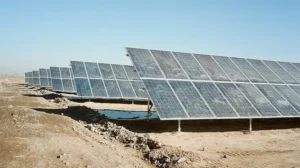Unlocking the Potential: Understanding and Preventing Hot Spots in Solar Panels
In the ever-evolving landscape of solar energy, maximizing the efficiency of solar panels is crucial. One recurring challenge that poses a threat to performance is the occurrence of hot spots. These hot spots, primarily caused by shading, dust accumulation, and design flaws, can significantly reduce the overall power-generating capacity of solar panels and even lead to permanent damage. In this comprehensive guide, we delve into the intricacies of hot spots and provide actionable insights on how to prevent their emergence.
Shading: Unveiling the Culprit

The primary culprit behind the formation of hot spots is shading. When a portion of a solar panel is shaded, a multitude of series-connected cells creates a substantial reverse bias across the shaded cell. The consequence is a build-up of heat in the affected area, causing an increase in temperature and the formation of a hot spot. This not only diminishes the overall efficiency of the panel but can also lead to permanent damage to the cells.
Dust and Debris: Stealthy Adversaries
Another contributing factor to hot spots is the build-up of dust and debris on the surface of solar panels. This accumulation obstructs sunlight from reaching the cells, resulting in reduced performance and elevated temperatures. Moreover, debris can impede the flow of air over the panel, a critical element for heat dissipation and temperature regulation.
Panel Design Matters
The design and construction of solar panels play a pivotal role in hot spot formation. Inadequate insulation or ventilation can lead to overheating, while poorly designed or manufactured cells can contribute to reduced performance and increased heat generation. Understanding these design intricacies is crucial for mitigating the risk of hot spots.
The Impact of Hot Spots
The repercussions of hot spots on power generation are profound. Beyond compromising overall performance, hot spots can inflict permanent damage to cells, diminishing the panel’s power output over its lifespan. This may render the panel less cost-effective, as the expenses associated with repairs and replacements could outweigh the savings generated.
Preventive Measures: A Holistic Approach

To prevent the emergence of hot spots, a multifaceted approach is necessary. Regular cleaning of panels to remove shading and debris is essential. Proper insulation, ventilation, and the strategic use of bypass diodes can also play a pivotal role in dissipating heat and preventing overheating.
Taypro offers innovative solutions for solar panel maintenance, addressing both cleaning and hotspot prevention.
- Automatic Cleaning: Taypro provides waterless automatic solar panel cleaning robots, such as Taypro AMS. These robots ensure efficient cleaning of solar panels without the need for water, maximizing sunlight absorption for optimal energy production.
- Innovative Technology: Taypro’s solar panel cleaning robots, including Taypro 2.0 Basic, utilize lift and shift mechanisms. This innovation allows for retrofitting in both utility-scale and rooftop solar plants, streamlining the cleaning process.
- Hotspot Prevention: While specific details on hotspot prevention mechanisms aren’t explicitly mentioned, effective solar panel cleaning is crucial in preventing hotspots. Clean panels ensure uniform sunlight absorption, minimizing the risk of shading-induced hotspots.
hot spots are formidable adversaries that can compromise the efficiency and longevity of solar panels. By comprehending their causes and adopting proactive measures, such as the integration of bypass diodes, regular cleaning, and selecting high-quality panels, we can ensure that solar panels remain a reliable, cost-effective, and sustainable source of energy.





